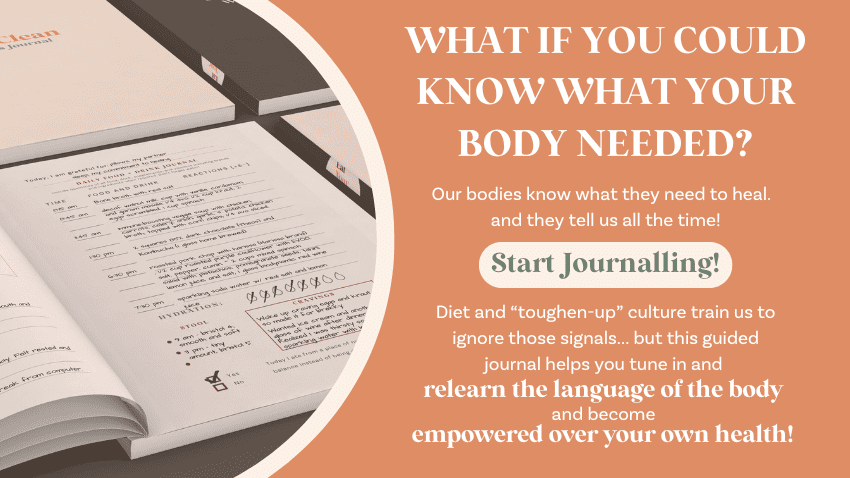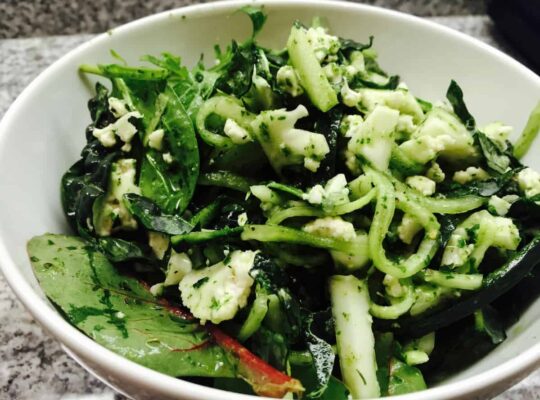The audiobook is narrated by the author, which is my favorite type of audiobook and therefore I recommend listening to it on Libby, the free public library app for audiobooks. Otherwise, it’s available on Amazon.
Her book goes far beyond personal anecdote. I enjoy her mix of personal experience, patient anecdotes, clinical studies, and research. This book is founded on the latest health science and translated into a story we can understand.
A Nutritional Book Review: The Secret Life of Fat
What you find below is my notes, takeaways and learning from the book. Occasionally I’ll add my own opinion but I try to make that distinction clear. If you want to see future nutrition book club summaries and cliffs notes, join my monthly newsletter.
The biggest focus of the book is that body fat, known as adipose tissue, is not just unwanted excess. Fat is a vital organ that’s part of the endocrine system with many critical functions. Its most important role might be to reserve energy for later use so that we don’t have to balance energy intake and expenditure on a minute by minute basis. Imagine if you always had to eat the exact amount of food calories to balance out the physical activity expenditure! It would make running and snowboarding a bit difficult.
But fat also allows for fertility, signals the immune system, maintains heat, manages resources, creates cell walls, composes myelin, transmits chemical messages, allows for transport of fat-soluble vitamins, tempers bone growth, works to maintain itself, and balances other functions in the body.
Our stem cells can even create fat, independent of our food intake, demonstrating how important fat is to our body!

What is Fat, Really?
There are 3 types of fat in the body and they act very differently: White fat: stores energy for future use. It’s what we usually think about when wanting to lose excess pounds.Beige fat: is converted to brown after exercise or cold exposure.
Brown fat: is colored by mitochondria and burns energy for heat. It’s found around organs and the throat and leads to a higher metabolism, though too much can lead to unsustainable resting energy expenditure. Brown fat could eventually be looked at as a treatment to obesity as it can signal to reduce white fat (even when injected via transplant in mice). Exposing people to cold temperatures until they start shivering for 10-15 minutes can also encourage the growth of brown fat.
Location Matters
Fat can reside in two different places: under the skin or in the abdomen around the organs.Subcutaneous fat, found under the skin usually around the hips and thighs, is associated with healthier outcomes and less likely to lead to chronic disease. Visceral fat, or that surrounding the organs, is correlated with chronic disease. According to the book, it is best to have more subcutaneous fat than visceral fat.
What does fat do for us?
Among other things, fat creates multiple hormones that are used to signal other mechanisms in the body. Some examples are:- Linoleic acid and other fatty acids that signal the immune system and are critical in preventing disease.
- Leptin which triggers your body that it has enough stored energy in fat so you no longer need to continue storing calories for future use.
- Leptin which can affect brain weight and development. Too much or too little fat and therefore leptin can lead to decreased brain weight or delayed brain development.
- TNF alpha which signals and triggers the immune system, specifically inhibiting insulin processing
- Hormones with multiple impacts on the body, including arterial genesis, brain matter, and immune system balancing
- Adiponectin phones fat home to adipose tissue. Having fat distributed in subcutaneous fat is healthier than visceral fat around the organ from the perspective of chronic disease risk. You can increase Adiponectin and thereby decrease visceral fat with vigorous exercise (about 3 HIIT sessions or jogging 20m per week).
- ASC (adipose stem cells) which can be used to heal organs and wounds. After cardiac arrest, pigs that received ASC recovered quicker and they also improved skin wound healing when applied to diabetic mice. They are now used for cosmetic surgeries to reduce wrinkles.
Fat and Fertility
Fertility is based on body fat percentage. A study found menarche, or the start of menstruation in girls, started only after they reached 17% body fat and those same girls needed to have 22% body fat to maintain menstruation. This research was revolutionary because previously we thought menstruation was tied just to age.It turns out that the amount of body fat drives menstruation, not age. This research has impacts on how we treat female athlete health and fertility. This is partly because fat creates estrogen which supports menstrual cycles and lactation.
It’s not just women!
Fat influences male sexual maturation, libido, and sperm production. And it also can influence a transition to what we perceive as adult-like behaviors. On the flip side, you can get too much of a good thing. Excess fat inhibits fertility in both sexes.
Fat and Bones
The same stem cells can turn into either bone or fat. Fat and bone also communicate to stem cells letting them know if the body needs more of one or the other.
A lack of fat could lead to stem cells turning into fat instead of bone, leading to weak bones and fracture risk. Alternatively, bones can signal the pancreas and then the larger digestive and endocrine systems that your body has strong bones and those stem cells can instead be made into fat. Fat and Bones are a reciprocal system and weight can be a better indicator of bone strength than age.
Fat and Immune Cells
In lean animals, 5% of the cells in fat are macrophages but in the obese population, over 50% of fat cells are macrophages. (Macrophages are a type of immune cells that clean up the body by eating dead cells/waste/invading bacteria and viruses) This is atypical as most organs only have about 5% of immune cells. They believe this is because the fat cells in obese patients are overcrowded and under stress. This chronic inflammation prevents fat from acting normally. For example, inflamed fat doesn’t respond to insulin as well or stops responding altogether, which can lead to fat deposits where they don’t belong like the liver or arteries. It also makes us hungrier, furthering the cycle. Additionally, TNF alpha signals the immune system to inhibit insulin processing.
Fat and Blood Vessels
Fat can signal the body to create new blood vessels in growing adipose tissue. The new vascular structures deliver more triglycerides to deposit into the adipose tissue. They also bring additional nutrients to support the fat. Based on this preliminary research, antiangiogenic drugs that prevent blood vessel growth and are used in cancer treatments could potentially be used to decrease blood vessel growth to fats. Obese mice treated with them lost 70% of their body fat.

SetPoint Theory
Fat fights to maintain itself! In other words, once your body sets a point of body fat and weight, it tries to keep you there.Patients who had been obese and then reduced their weight via restricted caloric intake maintained the reduced weight on fewer calories than people of normal weight. In other words, someone who was 150 lbs after losing weight ate fewer calories to maintain that weight than someone who was 150 lbs without dieting. The fat had found some way to thrive with less energy intake, making it physiologically harder for obese patients to lose weight despite reduced caloric intake and exercise.
In one experiment, researchers Libel and Rosenbaum found that patients losing 10% of their body weight required a 22% reduction in calories compared to someone who was naturally at that weight to begin with. This means gaining and losing weight or yo-yo dieting impacts your metabolism and makes it harder to stay thinner. Part of the reduced caloric need can be attributed to a decrease in resting metabolic rate from lost body mass, but there is more to the story.
A dieter who has lost weight has to run 5 miles to burn as many calories as a non-dieter burns in 4 miles. This is partly because of changes to hormones, particularly decreased leptin, thyroid hormones, adrenaline and noradrenalin which are responsible for stimulating metabolism. When they decrease, our metabolism slows. In other words, losing weight triggers our bodies to gain weight. The body makes a coordinated effort to decrease the calories burned and return to the previous weight. This reduced metabolic rate doesn’t come with a decreased appetite. Dieters are hungrier as well, showing stronger responses to food during brain MRI scans and reduced control of intake. In one study, leptin injections helped stimulate the hormones and reduced hunger allowing diesters to maintain weight loss.
Joseph Proietto did a similar research project studying hormone levels after a 10% reduction in weight. In addition to fat and thyroid hormones, he studied hormones produced in the gut such as ghrelin which is responsible for triggering hunger. The patients were on extremely reduced caloric intake for 10 weeks to lose weight. Despite losing an average of 30 lbs. in those first 10 weeks, they crept back up and regained 40-50% of that weight over the first year. They studied the hormones before, after the 10-week calorie restriction diet, and one year later. He found the hormones were permanently altered after a diet phase making it easier to gain weight at an endocrine system level. After dieting, Ghrelin was 20% higher and peptide yy, which reduces hunger and sends signals of satiation, was lower. GLP 1 and cholecystokinin were also altered to make people hungrier. In short, losing fat through calorie restriction caused the body to alter its chemical makeup in an attempt to gain back the lost fat.
What about liposuction?
Might be better to just hit the gym instead.Studies show the fat will grow right back and not necessarily in the same location. The total body fat in patients dropped in the first 2 weeks after liposuction, but after 1 year there was no difference in total fat percentage differences. Without changing lifestyles, the fat grew back. Whats worse is the liposuction removed subcutaneous fat and a year later grew back as the more dangerous visceral fat. After one year without any lifestyle changes, liposuction patients had the same amount of fat but were less healthy.
However, groups that exercised post-liposuction maintained weight loss. Exercise alone allowed patients to maintain the fat loss which makes you wonder if they needed the surgery at all.
Fat and Sleep
Lack of sleep is associated with low leptin and high ghrelin, which means your body is signaling for you to eat more food and to increase fat storage. Getting less than 6 hours of sleep is associated with obesity and decreased insulin sensitivity which is a precursor for chronic disease. I personally have experienced this in my life and it is so cool to read the research behind it! When I wake up rested, I have fewer cravings and tend to favor healthier food. When I’m exhausted I crave sugar and overeat.
Fat and Viruses
Viruses can also impact weight and fat gain. One researcher learned of a virus shrinking the thymus and causing visceral weight gain in chickens. He also found that his human patients infected with this same virus, identified by positive antibody tests, were more likely to be obese or overweight. The virus caused infected chickens to increase visceral fat while simultaneously decreasing blood lipids (cholesterol and triglycerides), despite maintained food intake.The virus had similar effects on chickens as on humans, which raises an interesting question. Could this mean fat is contagious? It appears so based on this virus research. Perhaps one day our children will be vaccinated against these viruses known to lead to obesity.
Fat and Bacteria
The Microbiome, my favorite topic, is also a relatively new field of research and is proving to be very important in determining the amount of fat your body stores. The largest quantity of microbes resides in our lower intestines and help with digestion and nutrient absorption. Gut bacteria produce enzymes that we cannot make ourselves that help breakdown food and extract nutrients. Some bacteria are more effective at this than others. If the bacteria are more effective at extracting nutrients, then you can derive additional nutrients, energy, and calories from the same amount of food. In other words, some types of gut bacteria can make you fatter.Mice with altered gut bacteria increased body fat while eating more than 25% less than sterile mice (mice without gut bacteria). They have shown that fecal transplants from these obese mice make the normal recipients obese. In other words, the gut microbiome could be making you fat. Obese patients tend to have more firmicutes and fewer bacteroidetes while lean individuals have the reverse. This relationship is shown to alter depending on your weight. Fat begets fat and weight loss begets more weight loss.
What does this mean? The nutritional facts of food can be different for different individuals. You can improve this ratio by eating prebiotic or non-digestible starch which feeds your good microbiome.
Fat and Genes
Genetics can also have an impact on your propensity to gain weight and ability to lose weight with diet and exercise. An FDO gene encourages people to eat higher calorie food, which can lead to weight gain. The FDO mutation also reduces the amount of calorie-burning brown fat compared with energy-storing white fat.IRS 1 gene variants can alter the distribution of subcutaneous versus visceral fat, insulin sensitivity, and lipids in the blood like cholesterol. In this case, those people that have one IRS variant are a little chubbier, but they are more protected from disease. Being active and living a healthy lifestyle can reduce the impact of these genes.
Heritage matters when it comes to fat storage. A history of famine could genetically encourage you to store more fat to be more protective in future cases of famine.
Fat and Sex
Males and females respond to caloric intake differently. Women make more fat than males beginning at birth, according to multiple research studies. This difference expands at puberty with girls having increased percentages of fat, independent of food intake. Men consume 51% more calories but only have 33% higher lean mass, which doesn’t account for the full difference. Women are slightly more efficient with processing energy, meaning they don’t need to burn quite as much fat to get the same amount of energy. It sounds good, but it leads to women storing more body fat. On the plus side, women’s more efficient fat storage can be more protective against chronic diseases.Women also burn more fat during exercise but get hungrier afterward. Men burn more carbs and protein but are less likely to overcompensate with eating afterwards. This seems to kick in after burning about 600 calories which means that women might get less return on vigorous exercise. However, the urge to overeat usually passes in an hour, so if this impacts you consider setting up distractions and delaying eating until that passes. Women often have a more emotional attachment to food and are more prone to dichotomous thinking which leads to higher abandonment of diet and exercise plans or could lead to depression or eating disorders.
When estrogen decreases, triglycerides clear the blood moving to fat tissue causing appetite to rise. Women crave higher fat foods and carbs in the second half of their cycle in tandem with the progesterone and estrogen cycles. In pregnancy, women gain fat even if they don’t increase caloric consumption. This might be related to the microbiotic changes that happen in the gut during the gestational period! This extra stored fat is often converted into breast milk to feed the newborn which helps promote rapid weight loss after giving birth.
Fat and Exercise
They found that vigorous exercise, meaning exercise that increases metabolism 6x or more over your resting metabolism, negated the impact of genetics. It also proved helpful in returning hormones to levels consistent with younger people and improving metabolism.Exercise increases insulin sensitivity, testosterone and growth hormone levels, and Adiponectin which lead to decreased fat, higher metabolism and increased lean body mass. However, folks need to balance the increased appetite that can come with exercise. Eating fiber and protein after exercise decreases overeating. Intermittent fasting prolongs the overnight fast and increases the release of hormones that burn fat.
Exercise makes the body break down fat regardless of genes and might be the most impactful lifestyle change for changing body fat.
Fat and Age
Aging increases our propensity to fat storage. As babies, we have more brown fat to keep us warm as we leave the womb and protect us from falls. At puberty, our fat changes. In women, it produces estrogen and enables menstruation. As we age, our fat changes its signaling to burn less energy while increasing white fat to store more energy. Due to these changes, fat accumulates in additional places in middle age.Additionally, testosterone levels decrease with age, decreasing lean body mass and further decreasing our ability to burn fat. According to one study mentioned by Tara, adding just a 1.4 mile run per week could be enough to counteract the impacts of aging.
Fat storage peaks in the 50s to 60s and then in the 70s we release fats as we advance into older age.
Fat Can Listen!
We already know fat talks by sending out hormonal signals to other parts of the body, but fat also listens to hormonal messages. Insulin receptors on adipose hear insulin released from the pancreas which signals the fat to absorb triglyceride and make more adipose tissue. Adrenaline tells your fat to burn and release free fatty acids for energy.Thyroid, growth, estrogen, testosterone and progesterone tell fat when it’s time to release fat as energy. These hormones reduce as we age which is why we start burning less fat and keeping more stored.
Fat as a Protector from Disease
One thing we don’t fully understand is that fat can be protective against certain health events such as a stroke in middle age. Certain studies found that overweight patients (not obese) lived longer after cardiac arrests and surgeries particularly if they are fit and regularly engage in aerobic exercise.While the science isn’t clear, they think this could potentially be related to the body having enough stored energy to support the body and normal functions as it heals and regains health.
Fat and the Environment
Since adipose is part of the endocrine system, it is impacted by exposure to chemicals known to disrupt or mimic the endocrine system. These endocrine disruptors can be found in our daily lives and can negatively impact our fat storage pathways. They are most commonly found in the 4 Ps. Plastics: contain BPAs and phthalates that can leach into our food and waterPreservatives: Often found in food and cosmetics. Avoid parabens
Produce: Certain foods have a naturally higher concentration of plant estrogens like soy and flax.
Pesticides: Can have man-made estrogens. These can be in water runoff and directly in our foods. You can avoid them by eating organic and avoiding pesticides in your lawn and garden.
The 4 Ps all increase digested estrogen which blocks testosterone and leads to increased fat storage. This digested estrogen can also spike SHBG (sex hormone binding globulin) to which can further block testosterone.
Switching from plastic to glass containers can make a big difference as can reducing exposure to pesticides by eating organic produce, avoiding high estrogen foods like soy and flax, and reducing processed foods and cosmetics with preservatives.
Controlling Fat
After learning adipose’s many critical roles in maintaining our bodies, what can we do about it? Tara ends the book with her recommendations on how to manage fat and her own personal story. She acknowledges that she responds differently to food and fat storage than most people and that her journey is different. The most important thing is to understand that the answer on how to manage fat is different for every person.Whether you are trying to gain, lose or just maintain your fat cells, here are some of the ideas mentioned in the book.

Exercise and Fat
Exercise is the most powerful means to control metabolism and weight. Challenging our muscles signals we need more strength, builds lean muscle mass, releases stored fat, and protects us from chronic disease by directing fat to the subcutaneous layer. It also let’s fat talk, releasing hormones to burn fat. She recommends trying to get 7 hours a week and keeping at an intensity that doesn’t trigger strong hunger pains. When it comes to reducing fat stores, reducing the intensity as you build strength can be better than jumping into aggressive exercise you’re not ready for and overeating afterward.
Eating Habits and Fat
We can also eat for our hormones. The best way to balance insulin is reducing refined carbs, reducing high fructose corn syrup, and eating more vegetables.Eating leafy greens and raw vegetables increase fiber and feed the good gut bacteria which fills you up with fewer calories and builds a healthier microbiome. A stretched stomach from fibrous foods triggers your body to stop eating and a healthier microbiome could extract fewer calories from the food, leading to a thinner you.
Intermittent fasting can release hormones that extend the release of growth hormone which burns fast. If this strategy is of interest to you, she recommends fasting 16 hours for women and 14 hours for men.
This could look like eating first at 1 pm then eating dinner and a small snack afterward, beginning the fast in the early evening. Or it could be having your last snack at 3 pm and skipping dinner. From my own personal experience, I would warn to be cautious with this option if you struggle with sleep or adrenal fatigue. Intermittent fasting will also be harder if you are used to eating carbs so adopting a low carb diet first can make this transition easier by adapting your body to living off fat.
Additional Strategies to Manage Fat
Stress relief and good sleep habits with 7+ hours per night are very important for balancing hormones and curbing overeating.Some approaches to consider:
- Do something that fits in your lifestyle. The most successful weight loss plans are those that can be followed long term
- Don’t overdo it. Your body fatigues from too many should activities or stressful and hard events in a day, which can lead to indulgences
- Track your food intake and exercise and use accountability partners
- Will power and self-control can be practiced and strengthened like a muscle. Start with small changes like not swearing or making your bed every morning and gradually work up to larger changes like no cookies and exercising Mondays and Wednesdays after work.
- Use temptation bundling such as reading a novel on the treadmill, listening to good music or podcasts on a run, or doing push-ups during commercials of your guilty pleasure TV shows
- Make contracts and use pre-commitment devices to stay committed to your future self and your goals
- Fresh starts can help people stick to goals because it separates your future self from the old you in the mind’s eye. Start new programs or habits on a new year, week, month or season
- Repeating behaviors that you want to adopt will eventually create good habits
- Remember that what matters is bringing your body to a healthy level. We should set goals and diet plans in a way that makes sense for us and ditch unrealistic physical standards from magazines and TV.
- Make sure you are in it for yourself!
- Don’t forget to be your own advocate! Multiple anecdotes in this story portray patients and parents of patients searching for third, fourth and tenth opinions until they finally found doctors and scientists that believed that something else was going on. This not only helped those patients, but it often furthered the clinical understanding of obesity and fat.
- Soluble fiber and volumous food like lettuce with some healthy fats and protein enhance satiation.
Recommendation
This is one of the better nutritional books I have read in a while. It is not often you get good science with a good story. If you find this topic interesting, I encourage you to read or listen to the book to hear all of the amazing anecdotes and research studies involved in these learnings.Did you learn anything from this summary that makes you want to read more or change the way you approach maintaining a healthy weight? I know I found myself wanting to include more vigorous exercise into my life because of its anti-aging and hormone stabilizing effects. You can purchase the book here.










Wow! So much information on the fat book! Did the author ever mention why our bodies use a set point at our heavy weight rather than a healthy weight? Does the body ever adjust to a new, lower set point?
Setpoint theory is super interesting! She said that it does adopt a new set point but it takes longer to reset at the lower weight. She didn’t give any specifics on how long it takes to set a new point, but that frequently gaining and losing weight can make weight loss more difficult. I guess that means it’s important to not overindulge for too long at once! And yes – it was a lot of info! One of my favorite nutrition books thus far. I totally recommend the audiobook.